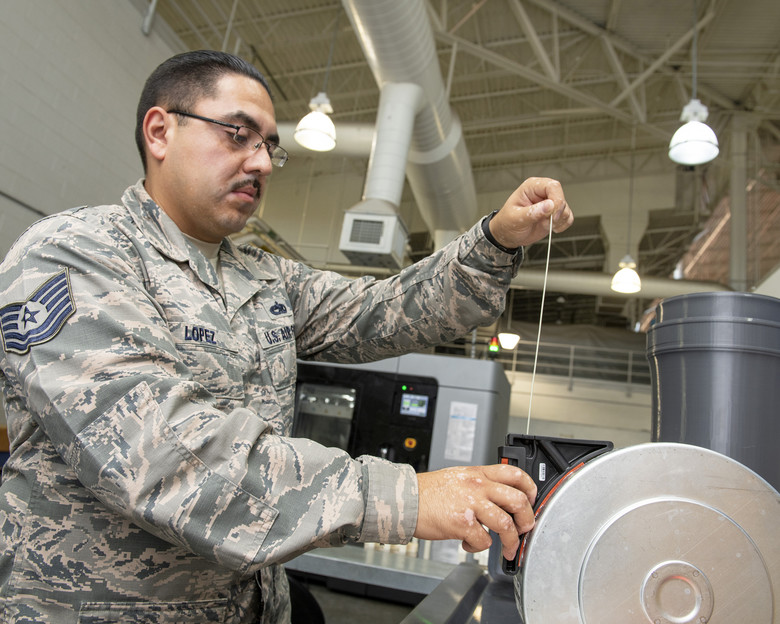The U.S. Air Force is collaborating with blockchain as a service (BaaS) company SIMBA Chain to enhance security in additive manufacturing. The partnership is part of the force’s Blockchain Approach for Supply Chain Additive Manufacturing Parts (BASECAMP) project. BASECAMP will use the SIMBA Chain platform to demonstrate a blockchain approach for the registration and tracking of 3D printed components during their entire lifecycle.
Blockchain in additive manufacturing
Each block in a blockchain database is an organized record that comprises a reference to the previous block and a time stamp. Complex mathematical algorithms link these blocks together in chronological cryptographic chain and forbids rearrangements along the chain.
The principle of blockchain is to combine digital records into blocks, creating an immutable and non-reputable digital ledger. The agreement rules and conditions are first established by all parties and encoded into a pre-programmed contract. The code will automatically execute when events specified by the conditions happen. Once in process, the terms of the contract will automatically transfer the value to the correct parties. Transactions to parties are recorded in the blockchain.
Supported by a grant from the Defense Advanced Research Projects Agency (DARPA), SIMBA Chain was formed to develop a secure, unhackable messaging and transaction platform for the U.S. military. The primary application of SIMBA Chain’s technology was in Defense Department communications. Blockchain has been implemented in communication between ground troops and their headquarters or between intelligence officers and the Pentagon.
Promising greater security during the 3D printing process, blockchain is gaining attention within the additive manufacturing industry. The U.S Department of the Navy used blockchain to control its 3D printers. In 2018, the National Center for Manufacturing Sciences signed an agreement with American aerospace and defense company Moog to develop blockchain security for 3D printing within the U.S. Department of Defense. Global information technology company Wipro is also developing manufacturing applications that are built upon a blockchain and targeted at 3D printer systems.

Securing distributed 3D printing in the battlefield
The Air Force uses a complex supply chain to equip and repair forward-deployed forces. These long value chains present a huge security issue in manufacturing, especially in military applications. This security loophole gives hostile entities opportunities to obtain and modify critical data. Therefore, the Air Force launched the BASECAMP project to coordinate distributed manufacturing in the battlefield.
In the BASECAMP project, SIMBA Chain will be used to decentralize additive manufacturing while maintaining the integrity of data. The Air Force will create a blockchain prototype for registering and tracking 3D printed components throughout their lifecycle. With SIMBA Chain, top secret 3D printing plans can be sent to forward forces free from unwanted surveillance. As a result, repairs to vehicles cannot be tampered by a third party.
“Blockchain is an ideal application for its decentralized nature, and SIMBA provides a simplification layer for blockchain developers to implement complex, security-focused solutions like BASECAMP,” SIMBA Chain said.

Subscribe to the 3D Printing Industry newsletter for the latest news in additive manufacturing. You can also keep connected by following us on Twitter and liking us on Facebook.
Looking for a career in additive manufacturing? Visit 3D Printing Jobs for a selection of roles in the industry.
Featured image shows a C-5 Galaxy which incorporates 3D printed plastic and metal parts taking off. Image via U.S. Air Force/Tech. Sgt. Justin D. Pyle



